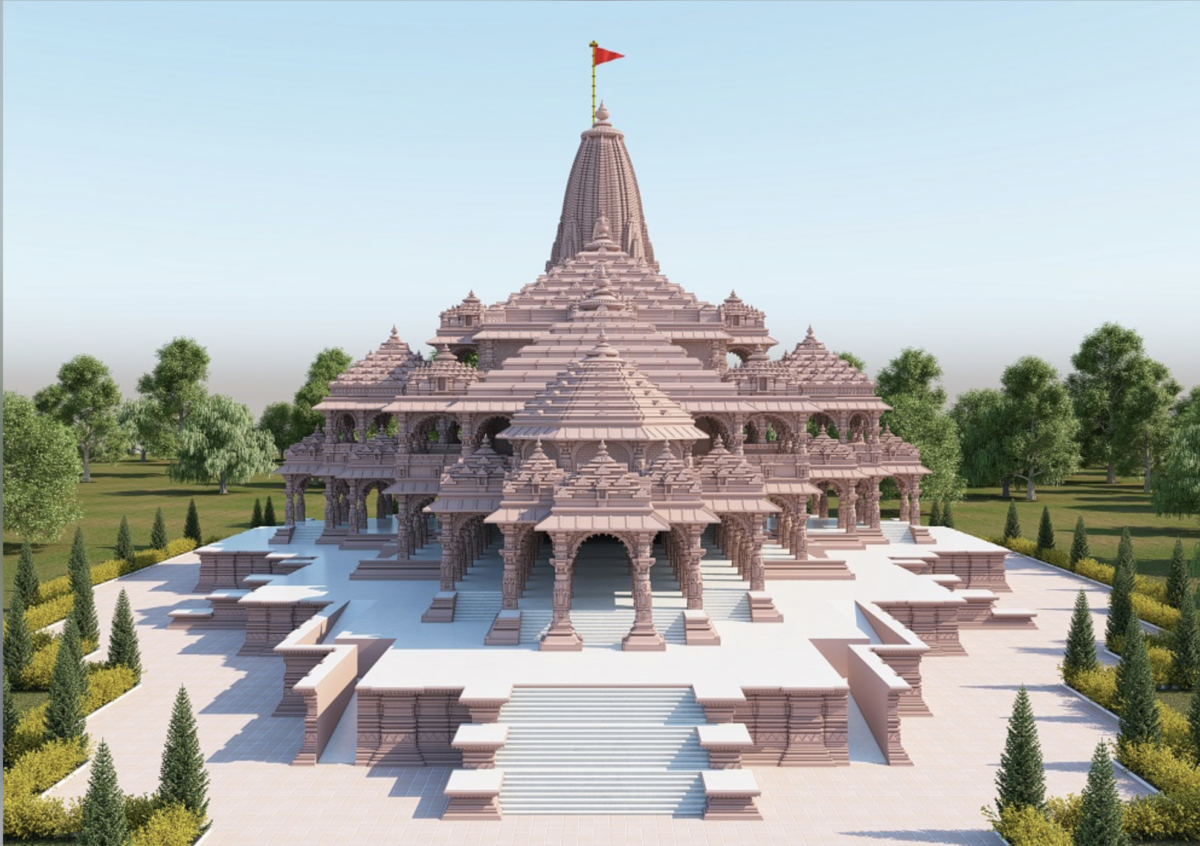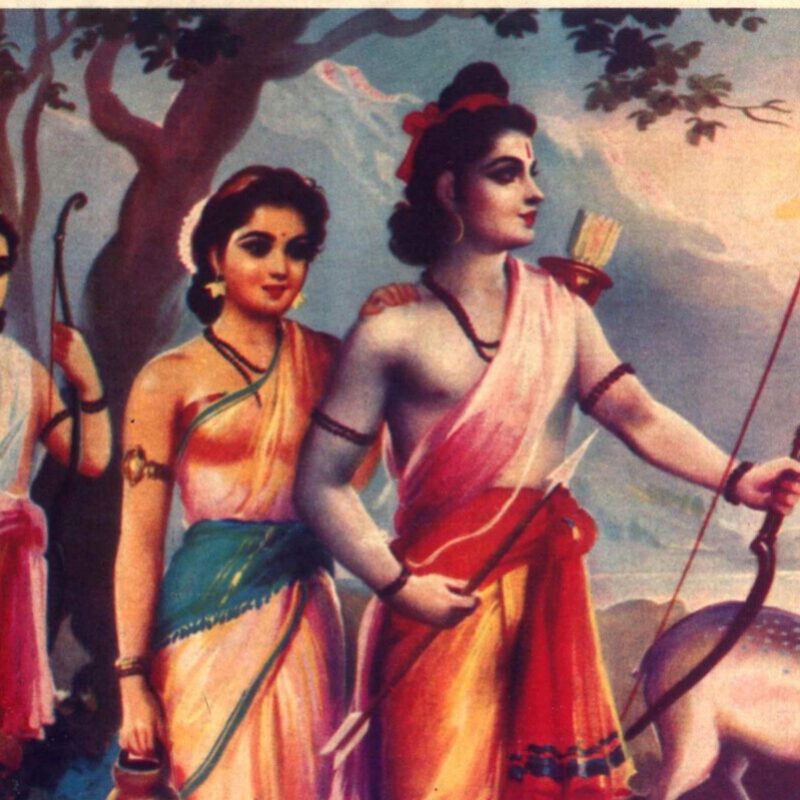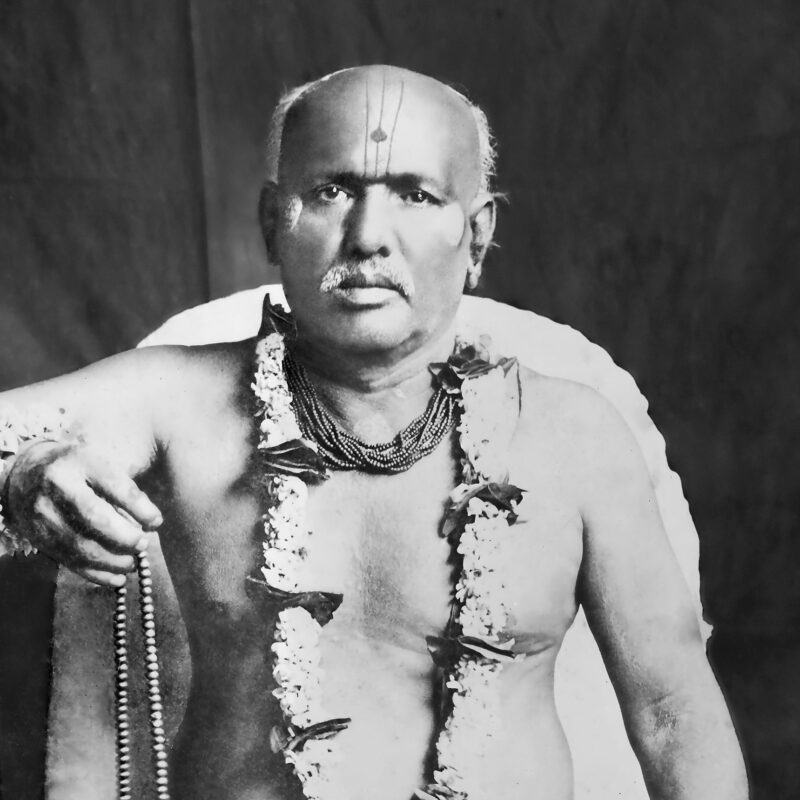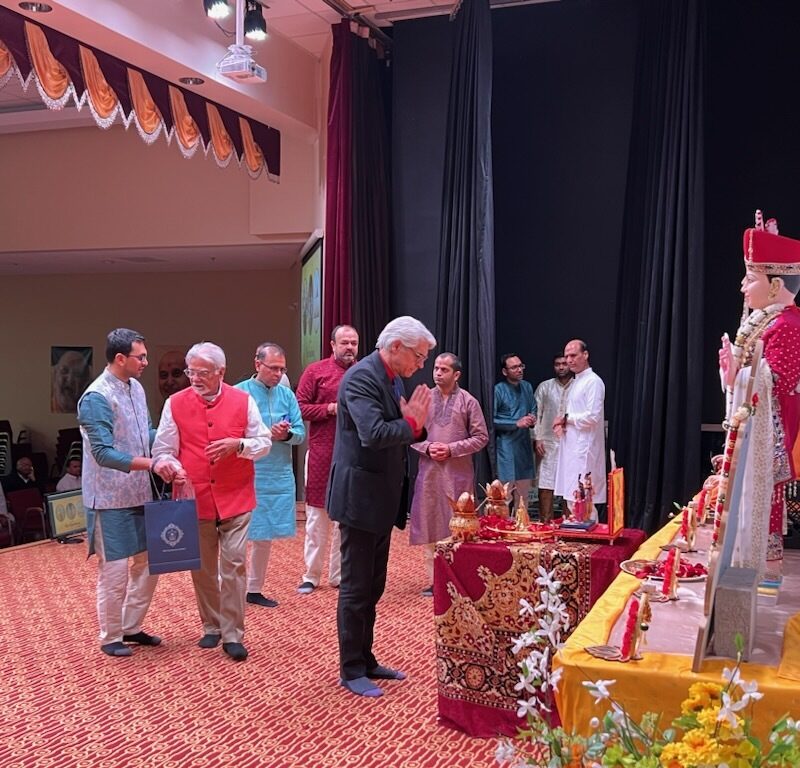
The last time a Hindu temple was on the site was in the 16th century
The new Ram temple and surrounding complex, the completion of which will take several years, is being built on an ancient site of Hindu worship. The final Hindu temple on the site was destroyed in the early 16th century by the first Mughal emperor for the construction of a mosque, known in modern times as the Babri Masjid. Archaeological evidence proves the mosque had no foundations of its own and was built upon a Hindu temple.
Since the early 19th century there have been Hindu and Sikh efforts to worship Lord Ram on the site. During British rule, the outer areas of the site were given to Hindu and Sikh devotees, with the inner areas remaining for Muslim prayer. Even prior to the establishment of the modern state of India in 1947, there have been a number of court cases concerning the site. In 1949, the government declared the mosque a disputed site, leading to the discontinuation of the mosque’s use. In the early 1990s this mosque — which had not been in use for half a century — was torn down after a rally at the site turned violent. In 2019, the Indian Supreme Court weighed in, allowing the construction of a Hindu temple on the site to proceed and granting significant land nearby for a new mosque.
The mosque replacing the Babri Masjid will be the largest in India
As part of the Indian Supreme Court’s ruling on the site in 2019, land nearby was set aside for the construction of a new mosque, replacing the Babri Masjid. This new mosque will become the largest mosque in India. To be named the Masjid Muhammad Bin Abdullah, some 9000 worshippers will be accommodated at one time. Construction is planned to begin soon.
The site is considered to be the traditional birthplace of Lord Ram
As the traditional birthplace of Lord Ram, archeological and documentary evidence shows that the site has been recognized as a place of spiritual importance for Hindus since time immemorial. Thus, this is an important event for Hindus of all traditions.
Seeking restorative justice to re-establish a Hindu temple that had been destroyed as a result of iconoclasm a few hundred years ago has great symbolic and emotional resonance for Hindus in contemporary times. The trauma that this destruction brought has been passed down through generations and continues to impact the psyche of Hindus.
The destruction of thousands of Hindu temples by Muslim rulers and invaders in India, including major Hindu places of worship in Varanasi and Mathura, and the sometimes denial or downplaying of the amount of destruction that occurred, has contributed historically and continues to contribute to Hindu-Muslim tensions in India to this day.
Archeology shows continuous Hindu worship on the site for thousands of years, until the early 16th century
The most recent excavations by the Archeological Survey of India — done with representatives of both sides of the dispute present and with one of the lead archeologists being Muslim — show that the Ram Janmabhoomi site has been in continuous use as a sacred site by Hindus and adherents of other Dharma traditions since the second millennia BCE.
There is no evidence that the site was used for anything other than sacred purposes during this period, meaning there is no evidence of homes or other dwellings on the site. Excavations have discovered Hindu sandstone carvings and pillars, as well as Shivalinga on the site.
The most recent Hindu temple on the site dated back to the 12th-century and was the largest of temples that had occupied the area.
This temple was destroyed by Babur, the first emperor of the Mughal Dynasty, for the construction of a mosque in 1528. Excavations also show that this mosque had no foundations of its own and was built directly on top of the Hindu temple that preceded it.
The courts have been ruling on the temple site for more than a century
Though sometimes presented as being a recent conflict, the fact is that this site has a long history of Hindus and Sikhs attempting to reclaim it, dating back to the early 19th century. Furthermore the conflict has been ongoing regardless of the political party in power following India’s independence. Here are some key events in the re-establishment of a temple for Lord Ram on the site.
- 2000 BCE — Earliest evidence of dharmic worship at the site.
- 1528 — Babur, the first Mughal emperor, destroys the last and largest Hindu temple on the site. The mosque built on the ruins of this temple was called the Masjid-e-Janmastan, being a reference to the birthplace of Lord Ram. This later became known as the Babri Masjid.
- 1822 — A court official states that the Babri Masjid was built after the destruction of a Rama temple.
- 1858 — On November 28, 1858, a group of 25 Nihang Sikhs entered the Babri Masjid and conducted Hindu rituals and inscribed “Ram! Ram!” on the walls of the Masjid.
- 1885 — Mahant Raghubar Das, from the Hindu group Nirmohi Akhara, filed a suit seeking permission to construct a Ram Temple on the site. A local court had previously prohibited similar construction after Muslims objected. Ultimately the case was dismissed.
- 1949 — Three Hindus placed a murti of Lord Ram in the Masjid, leading to protests from Muslims. The government closed the site and declared disputed. No Muslim prayers have been held in the site since then.
- 1950 — Two lawsuits were filed by Hindus for the right to conduct religious rituals and keep murtis of Lord Ram in the site.
- 1959 — The Nirmohi Akhara files a third lawsuit for the right to conduct religious worship at the site.
- 1961 — Sunni Muslim body files a lawsuit seeking possession of the site and removal of the murtis of Lord Ram.
- 1989 — A district court orders the site to be unlocked and open for Hindu worshippers.
- 1992 — On December 6, a rally organized by the VHP and Bharatiya Janata Party (BJP) at the site grew to more than 150,000 people. The Babri Masjid had been cordoned off by police in an attempt to protect it. By noon, the police cordon was breached, police fled, and within a few hours the mosque, unused for more than four decades, was demolished. In the months following the destruction, inter-religious riots took place in many parts throughout India, leaving several thousand people dead. Later terrorist attacks in India used the destruction of the Babri Masjid as justification. Additionally, several thousand Hindu temples were attacked and destroyed by Muslim mobs in Pakistan, Bangladesh, and Afghanistan in retaliation.
- 2019 — India’s Supreme Court ordered the land to be awarded to a trust to build a Hindu temple. It also ordered the government to give an alternate five acres of land to the Sunni Waqf Board for the purpose of building a mosque. When constructed, the mosque built on this site will be the largest in India. The Shia Waqf Board also intervened in the lawsuit in support of allowing Hindus to build a Ram temple at the site.
Learn more
READ: Why the Struggle for a Ram Temple Was the First, Truly Subaltern Mass Movement of Independent India
READ: Dalits have a special place in the new Hindutva matrix. Ram Mandir is proof of that
WATCH: Ram temple existed before Babri mosque in Ayodhya: Archaeologist KK Muhammed
WATCH: The Battle for Rama, A Case of the Temple at Ayodhya
WATCH: Flight of Deities – Meenakshi Jain
WATCH: Archaeologist, B B Lal on Ramayana site archeological survey and Babri Masjid








































